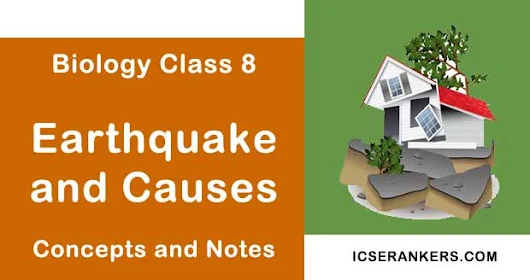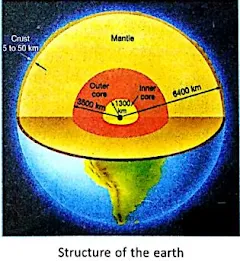Earthquake and Causes- Biology Guide for Class 8
Information about Earthquake and Causes
Title | Earthquake and Causes |
Class | Class 8 |
Subject | Class 8 Biology |
Topics Covered |
|
Natural phenomenon is a non-artificial event, an event that is not due to humans. It can, however, affect humans. Such natural phenomena include meteorological phenomena, like thunderstorms and cyclones, and geological phenomena, like volcanic activity and earthquakes.
These natural phenomena can cause large scale destruction of human life and property. Fortunately for us, these meteorological phenomena can be predicted to some extent.
The weather department can warn us about a thunderstorm developing in some areas, and this can give us time to take measures to protect ourselves. There is, however, one natural geological phenomenon which we are not yet able to predict accurately. It is the earthquake. It can cause damage to human life and property on a huge scale.
Earthquake
An earthquake is a sudden tremor, or movement of earth's crust, which usually lasts only for a very short time. It originates naturally at, or below, the surface of the earth.
- Earthquakes can take place at depth of up to 720 km below the earth's surface.
- However, the ones, that produce significant effects at the surface of earth, usually occur no deeper than 70 km.
- Every year, there are about 1,000 earthquakes around the world that are strong enough to cause damage to life and property.
We often hear some news, about the earthquakes, only once in a while. However, earthquakes occur all the time, all over the earth (There are about 800 of them everyday). This is because the vast majority of these quakes are very weak. They are not even noticed.
- Major earthquakes are much less frequent but are more destructive.
- Major earthquakes usually do not occur alone; when one such earthquake happens, there is usually another one at a nearby location.
- Sometimes, an earthquake also has foreshocks. Foreshocks are smaller earthquakes that happen in the same place before the larger (main) earthquake occurs.
- As at present, scientists (geologists) cannot predict (very) accurately whether a given earthquake is a foreshock that is likely to be followed by a larger (main) earthquake.
Earthquake (main shocks) are quite often followed by after shocks. Depending on the size of main shocks, aftershock can continue for weeks, months and even up to a year, after the main shocks.
Effects of an Earthquake
Earthquake produces various damaging effects over the areas they act upon.
List of some damaging effects caused by earthquakes:
- Earthquakes can cause damage to the buildings, bridges, dams.
- Earthquakes, in many cases, may cause great loss of life.
- Earthquakes can also cause floods and landslides. Landslides, triggered by earthquakes, often cause more destruction than the earthquakes themselves.
- Sometimes the earthquake occurs beneath the ocean floor. Such earthquakes can lead to a tsunami.
Tsunami is a series of huge seawaves; these consist of high long walls of water which move at a very rapid rate (≈960km/hr). They may grow as high as 15-85 m by the time they reach the shore. The force of these water waves (tsunami) can destroy the entire population, or can wash away an entire city, in just a few seconds.
A major tsunami occurred in the Indian ocean on 26 December 2004. All the coastal areas, around the ocean, suffered huge losses.
Cause of an Earthquake
It is now known that earthquakes are caused by disturbances deep down inside the uppermost layer (lithosphere) of the earth. The outermost layer of the earth is not in a 'single piece'; it is broken into a number of plates, known as lithospheric plates or tectonic plates.
- It is now known that these plates are moving around very slowly — just a few millimetres every year.
- This (small) movement is due to the movement of the molten magma inside the earth.
- The movements of these plates cause changes on the surface of the earth which may cause an earthquake.
- Tremors, on the earth, can also occur when a volcano erupts, or a meteor hits the earth, or an underground nuclear explosion is carried out.
- However, most of the earthquakes are caused by the (natural) movement of earth's plates.
Let us get some idea of what happens when the plates try to slide past each other.
- The boundaries (rough edges), of the plates, may get interlocked due to friction.
- The rest of the plates, however, keep on moving. This causes a tension to build up in the plates.
- When the force of moving plates overcomes the friction at the edges, all of their stored energy gets released. The earth shakes/vibrates around this point.
- The vibrations, at the point of the release of energy, give rise to shock or seismic waves; these are very much like the ripples in a pond that arise when a stone is thrown into it.
- These seismic/shock waves shake the earth as they move outward through it.
- When the waves reach the surface of the earth, they shake the ground as well as all the things on it, i.e. buildings, bridges, dams, etc.





